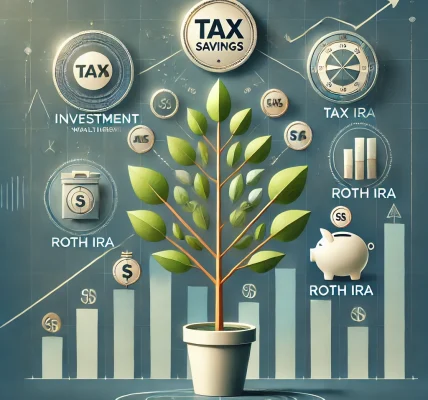Effective tax planning is a critical component of personal financial management, enabling individuals to optimize their income by legally minimizing tax liabilities. In India, the Income Tax Act, 1961, provides various provisions and deductions that taxpayers can leverage to reduce their taxable income. This guide offers actionable strategies to help you navigate these provisions and implement tax-efficient practices, ensuring compliance with legal requirements.
1. Understand the Tax Regimes: Old vs. New
India offers two tax regimes: the Old Tax Regime and the New Tax Regime. Each has distinct tax slabs and associated benefits:
- Old Tax Regime: Allows taxpayers to claim various deductions and exemptions, such as those under Section 80C, 80D, and others.
- New Tax Regime: Introduced in the Union Budget 2020, this regime offers lower tax rates but eliminates most deductions and exemptions.
It’s essential to assess which regime aligns best with your financial situation. If your eligible deductions and exemptions exceed the threshold where the old regime becomes more beneficial, it may be prudent to opt for it. Conversely, if you have fewer deductions, the new regime’s lower tax rates might be advantageous.
2. Maximize Deductions under Section 80C
Section 80C of the Income Tax Act allows deductions up to ₹1.5 lakh from your taxable income. Eligible investments and expenses include:
- Provident Fund (PF) Contributions: Investments in Employee Provident Fund (EPF) and Public Provident Fund (PPF) qualify for deductions.
- Life Insurance Premiums: Premiums paid for life insurance policies for yourself, spouse, or children are deductible.
- Equity-Linked Savings Schemes (ELSS): Investments in ELSS funds offer the dual benefit of tax savings and potential equity market returns.
- Home Loan Principal Repayment: The principal component of your home loan EMI is eligible for deduction under this section.
3. Leverage Additional Deductions
Beyond Section 80C, several other sections offer deductions that can further reduce taxable income:
- Section 80D: Deduction for premiums paid towards health insurance policies:
- Self, Spouse, and Children: Up to ₹25,000.
- Parents: Additional ₹25,000 (₹50,000 if parents are senior citizens).
- Section 80E: Deduction on interest paid on education loans for higher studies, available for eight years from the year of loan repayment commencement.
- Section 80G: Deductions for donations to specified charitable institutions and relief funds, with the deduction percentage varying based on the institution.
4. Invest in the National Pension System (NPS)
The NPS is a government-backed retirement savings scheme offering tax benefits:
- Section 80CCD(1): Deduction up to 10% of salary (for salaried individuals) or 20% of gross income (for self-employed), subject to the overall ceiling of ₹1.5 lakh under Section 80C.
- Section 80CCD(1B): Additional deduction of ₹50,000 over and above the Section 80C limit for contributions to NPS.
Investing in NPS not only secures your retirement but also provides substantial tax benefits.
5. Claim Home Loan Interest Deduction
Interest paid on home loans is eligible for deductions:
- Section 24(b): Deduction up to ₹2 lakh on interest paid for a self-occupied property.
- Section 80EEA: Additional deduction up to ₹1.5 lakh for interest paid on loans sanctioned between April 1, 2019, and March 31, 2022, for first-time homebuyers, subject to certain conditions.
These deductions can significantly reduce your taxable income, making homeownership more affordable.
6. Utilize Standard Deduction
Salaried individuals can avail a standard deduction of ₹50,000 from their salary income, replacing the earlier exemptions for transport allowance and medical reimbursement.
7. Opt for Tax-Free Allowances
Certain allowances provided by employers are tax-exempt, subject to specified limits:
- House Rent Allowance (HRA): Exemption is available under Section 10(13A) if you live in rented accommodation, subject to certain conditions.
- Leave Travel Allowance (LTA): Exemption for travel expenses incurred within India, available for two journeys in a block of four years.
Proper structuring of your salary components can maximize these exemptions.
8. Reap Benefits from Long-Term Capital Gains (LTCG)
Long-term capital gains from the sale of equity shares and equity-oriented mutual funds exceeding ₹1 lakh are taxed at 10% without the benefit of indexation. However, gains up to ₹1 lakh are tax-exempt, providing an opportunity to plan your investments and withdrawals strategically.
9. Consider Tax-Efficient Investment Options
Investing in instruments that offer tax benefits can enhance your post-tax returns:
- Public Provident Fund (PPF): Offers tax-free interest and qualifies for deduction under Section 80C.
- Sukanya Samriddhi Yojana (SSY): Designed for the girl child, this scheme offers tax-free returns and deductions under Section 80C.
- Tax-Free Bonds: Interest earned is tax-exempt, providing a steady income stream without additional tax liability.
10. Maintain Comprehensive Financial Records
Keeping detailed records of your income, investments, expenses, and deductions is crucial




